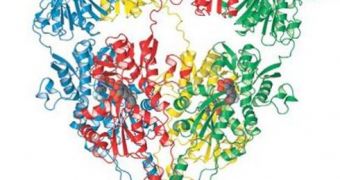Scientists at the Oregon Health and Science University, in Portland, were recently able to identify the structure of one of the most complex and important proteins in the human body. The full structure of the brain protein may one day provide researchers with the necessary knowledge to begin work on and the development of new classes of treatments, to address a wide variety of neurological disorders. Details of the team's work appear in the November 29 online issue of the respected scientific journal Nature. The OHSU team was led by protein crystallographer Eric Gouaux, Nature News reports.
What the team set out to do was to basically map a glutamate receptor in its entirety. This is a brain protein that some researchers believe plays an important role in facilitating learning and the formation of memories. They believe the receptor also mediates the transmission of electrical impulses between neurons in the brain and elsewhere in the body's nervous system. As such, better understanding its function could give scientists the key to developing a host of new therapies against numerous neurological disorders.
The research results “tells us things about the organization of the receptor that were just completely unanticipated,” Gouaux explains. In the new study, which was conducted on unsuspecting rats, the researchers cultivated a glutamate receptor known as GluA2. A large amount of such proteins was then inserted into crystals, which were subjected to high-energy X-ray blasts afterwards. The way the X-rays reflected off the crystals gave the researchers data on how the receptor was made up. The process is so accurate, that it can even identify its target's structure at the atomic scale.
This achievement could prove to be extremely important for finding possible treatments in conditions such as Alzheimer's and epilepsy, which are widely believed to be caused by malfunctions in the way the glutamate receptors mediate the passing of electrical impulses along neurons. “If you know what the lock looks like then you can better design a key. If you don't know you're at a loss,” Gouaux says. “This will be enormously useful. It's hard to overstate its importance. It's probably one of the most important papers that have come out in this field in the last 10 years,” Emory University in Atlanta researcher Stephen Traynelis adds.

 14 DAY TRIAL //
14 DAY TRIAL //